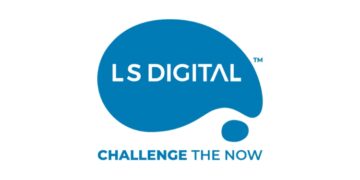Hercules discovered that every time he struck the head of Hydra, two grew in its place. While some grow weaker putting up a fight, there are others for whom every wound enables them to discover strength like never before. The resilience showcased by a number of SaaS companies across two years of the pandemic is nothing short of admirable. However, ultimately, the strength displayed on reaching the shores after battling turbulent waters for two years is the real test of anti-fragility.
In the face of macroeconomic challenges, it would be foolishly optimistic to believe that most organizations would willingly have a lavish budget for SaaS companies. The rapid digital transformation that came in as the only alternative for the last two years, has led to a clear & obvious tech-stack fatigue. SaaS companies, therefore, need to now continue to hold the fort and justify their value to avoid getting eliminated altogether. To weather the economic downturn and prepare for any economic challenges, here are four recommendations.
Rethink your cost structure:
Consider how you can repackage your current offerings to appeal to a wider audience. The advantage of having flexible payment terms is that the more value the client sees in the solution, the more they want to buy. As the services stay ongoing, they can always purchase add-ons as needed.
Moreover, usage-based pricing is one pricing strategy that fundamentally benefits both parties. Customers don’t pay until after using the product and realizing its worth; but if the product is used in their area of work, they start paying in substantial amounts relatively immediately. When HubSpot marketed its product in 2011, the only tiers accessible were Good, Better, and Best. Usage-based pricing was then added by the corporation to its Marketing Hub membership packages. Between 2011 and 2014, this change increased HubSpot’s net dollar retention from about 75% to over 100%.
Spend money on customer value management:
During a downturn, your business must compete not only with other companies in the industry but also with other uses of the customer’s resources. Create internal champions for your product so that key decision-makers understand its worth. This includes meeting with the client and going over the value equation with them to demonstrate exactly what your software can do for their business.
Offer them incentives, such as cost-free licensure, to help them get through the downturn. If you take this approach, you could gain loyal customers who will always support your company. Several SaaS companies, including Salesforce and Zoho, even went further during the pandemic and started offering small firm subsidies.
A loyal client base is the only true asset you have. Selling to your present client base is more affordable and less complicated, leading to a price reduction of 5 to 25-fold, than putting all of your energy into finding new consumers.
Taking those critical next steps requires you to demonstrate the worth of your product. Customers will feel more secure if you quantify the benefits of using your product, converting them from undecided to committed—and thus increasing your wins.
Make every effort to increase sales outreach as soon as possible:
Sales outreach is critical to any company’s success. If you gather information about your customers, you must use that information to connect with them more effectively. Sales outreach platforms nowadays do more than just house massive contact databases. Choose a platform that allows you to combine sales and marketing.
It’s also a good idea to include customizable web forms that collect different types of information depending on your prospects. Connect these datasets to your outreach platform and CRM to gain a comprehensive view of your prospects and customers. As you collect more data, you will be able to build customer loyalty, which will help your business during difficult times.
Restructure marketing campaigns:
In difficult economic times, B2B SaaS enterprises should increase their marketing spending to take advantage of the huge opportunity presented by less dependable rivals in their industry.
To consistently deliver on their promises, businesses must align marketing and sales. Customers must understand what the product can do for them and how it differs from other options before being approached for a sale. Too many businesses say the same thing, and those that don’t distinguish themselves will suffer during a downturn.
How do you break through the clutter? How do you provide value to your customers and prospects through marketing? One strategy for marketing would be to adopt a more result outlook.
One innovative tactic is to use your product as a marketing conduit. Make use of artists to turn your merchandise into a marketing tool and boost your brand’s awareness. To deliver trustworthy COVID-19 data, Tableau makes use of Tableau Public. These visualizations can be added to websites, social networking sites, and blogs.
However, it has to be regulated during economic downturns or financial crises. For companies like Salesforce, Tableau, and Oracle, marketing accounted for more than 20% of total revenue. In contrast, Zoho substantially cut back on its Google Ad spending during the outbreak despite having a healthy cash flow. It is crucial to find the right balance.
Summing up
The road ahead for SaaS companies may be tough, but depressions on the road to success do not have to ruin your operation. By implementing the right strategies, you can adjust, focus, and guide your team past the economic recession by adapting the above-mentioned recession-proof ideas.
















